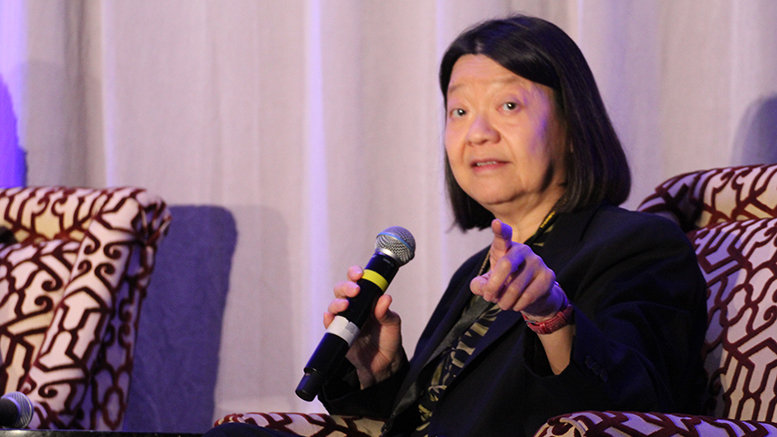NEW ORLEANS — For Pam Eddinger, chairing a 29-member federal advisory panel on apprenticeships wasn’t exactly fun, but it was worth it. And she encourages other two-year college leaders to spearhead efforts locally and regionally to expand and evolve apprenticeships.
Eddinger, president of Bunker Hill Community College in Massachusetts, recounted her experience during a plenary session at the annual Workforce Development Institute held by the American Association of Community Colleges. It wasn’t always easy serving as chair of the U.S. Department of Labor’s (DOL) Advisory Committee on Apprenticeships for two years — there were plenty of contrasting views on the panel from labor, employers and other stakeholders bout how apprenticeships should work — but the members got the work done.
“I believe they brought me on because they thought the community college has a role in this,” said Eddinger, who was nominated for the post by then labor secretary and former Boston mayor Marty Walsh.
Eddinger said she used her position on the committee to convey to the other members who community college students are. She wanted to dispel that they were like the traditional college-age students at four-year institutions. She wanted them to understand that community college students were often “non-traditional” — usually in their 20s and older, first in their families to attend college, often married with children and holding jobs. And they often come from diverse racial and ethnic backgrounds.
Compare that to union halls that still predominately have white male members, Eddinger said.
Opportunity for change
This month, DOL released its proposed regulatory updates to the nation’s registered apprenticeship system. (Comments are due March 18.) Eddinger said the proposals, in part, aim to add more diversity to apprenticeships and encourage expansion to other industries.
Read and comment on the regulations and watch a recording of a DOL webinar held this week that provides more details on the proposals.
Eddinger said it’s an opportunity for community colleges to review their approach to apprenticeships. Plenty of work has been done over the past decade to branch into new industries, such as healthcare, insurance and teaching, but more can be done.
Eddinger encouraged leaders not just to expand apprenticeships, but to help “change the complexion” of apprenticeships. She cited in particular language in the proposed regulations that aims to more closely align apprenticeships with career and technical education (CTE).
“That is going to be a game changer,” she said.
Areas of focus
The three areas DOL is focused on in the proposals are expansion, equity, and innovation, said John Ladd, administrator at the department’s Office of Apprenticeship, who gave a brief overview at WDI. The department is taking a forwarding-thinking approach, asking how apprenticeships should look in 10 years. That includes conversations on expanding the system and modernizing it to serve more individuals and industries, he said.

“It used to be a very narrow system of limited actors doing this kind of work,” Ladd said. “Now you see just every kind of organization, every kind of entity — the education side, workforce side, private entities getting into the education space — and thinking about the roles that all these players need to play.”
Equity and inclusion are a part of that, Ladd continued, noting that apprenticeships are still 85% male. Apprenticeships can be a mechanism to help industry diversify its workforce and present more opportunities to underserved populations, he said.
The goal is to “make sure apprenticeship looks like the communities in which it operates,” Ladd said.
Upcoming funding
Ladd also noted federal funding opportunities that will soon become available, focusing on three areas:
- Equity and pre-apprenticeships. He said there is strong research that pre-apprenticeship is critical to support pathways into apprenticeships, and apprenticeships that have received federal support are significantly more diverse than the broader apprenticeship system.
- Education alignment. This includes youth apprenticeships and aims to integrate and align apprenticeships with CTE at secondary and postsecondary levels.
- Apprenticeship hub. The goal is to support regional or sector-based efforts at the local level that could be led by community colleges, workforce systems, industry partners and others to team on curriculum development and scale up apprenticeships.

